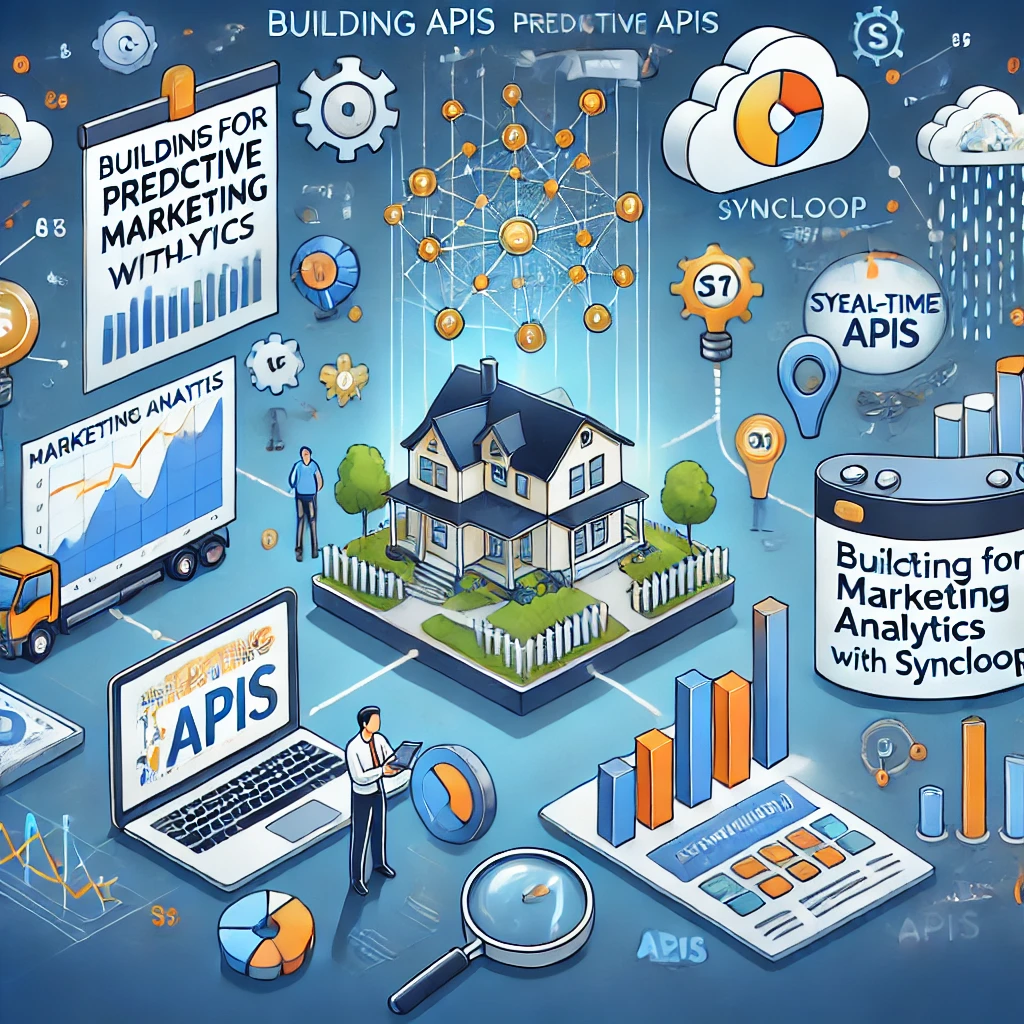Building APIs for Predictive Marketing Analytics with Syncloop

Syncloop provides an ideal platform for building APIs tailored for predictive marketing analytics. Its robust features simplify the process of data integration, model deployment, and real-time decision-making. This blog explores how to design APIs for predictive analytics using Syncloop and best practices for implementation.
The Role of APIs in Predictive Marketing Analytics
APIs empower predictive marketing analytics by connecting various components in the ecosystem, including:
- Data Integration: APIs collect data from CRM systems, social media platforms, and customer interaction logs.
- Model Integration: APIs facilitate the deployment of machine learning models for predictions.
- Real-Time Insights: APIs deliver predictions to marketing platforms for real-time campaign optimization.
- Automation: APIs enable automated workflows, such as sending personalized offers or adjusting ad bids.
How Syncloop Facilitates Predictive Analytics API Development
Syncloop provides a comprehensive platform for creating APIs that streamline the predictive analytics process. Key capabilities include:
- Data Connectivity Integrate data from diverse sources, such as databases, cloud storage, and third-party APIs.
- Dynamic Data Transformation Clean and prepare raw data for machine learning models using Syncloop’s data mapping tools.
- Real-Time Processing Deliver predictions in real time for immediate action on marketing strategies.
- Advanced Security Protect sensitive customer data with encryption, role-based access controls, and compliance tools.
- Workflow Orchestration Automate end-to-end processes, including data preparation, model inference, and result delivery.
Steps to Build APIs for Predictive Marketing Analytics with Syncloop
Step 1: Define Use Cases and Data Requirements
Identify key use cases for predictive marketing, such as:
- Predicting customer churn.
- Recommending personalized products.
- Forecasting campaign performance.
Gather data requirements for each use case, including historical customer data, transactional data, and external datasets.
Step 2: Connect Data Sources
Use Syncloop’s integration tools to connect to CRM systems, marketing platforms, and third-party data providers. Configure API endpoints to fetch data in real time or batch mode.
Step 3: Prepare Data
Leverage Syncloop’s data transformation features to:
- Cleanse and normalize raw data.
- Map fields to align with the machine learning model’s requirements.
- Aggregate data for time-series or trend analysis.
Step 4: Integrate Predictive Models
Deploy predictive models as APIs within Syncloop. Configure endpoints for:
- Submitting input data to the model.
- Retrieving prediction results.
Support for popular machine learning frameworks, such as TensorFlow, PyTorch, and Scikit-learn, simplifies model integration.
Step 5: Automate Workflows
Design workflows to automate the entire predictive analytics process. For example:
- Trigger API calls to fetch updated customer data.
- Pass data through the model for prediction.
- Deliver results to marketing platforms via APIs.
Step 6: Test and Optimize
Simulate API calls in Syncloop’s testing environment to ensure reliability and accuracy. Optimize endpoints for latency and scalability to handle real-time demands.
Step 7: Deploy and Monitor
Deploy APIs to Syncloop’s cloud-native infrastructure. Use built-in monitoring tools to track API performance, usage, and errors.
Best Practices for Building Predictive Analytics APIs
- Standardize Data Formats Use consistent formats for inputs and outputs to simplify integration with external systems.
- Implement Version Control Maintain backward compatibility by versioning APIs during updates or improvements.
- Use Secure Authentication Protect APIs with OAuth 2.0, JWT tokens, or API keys to secure sensitive data.
- Enable Real-Time Capabilities Minimize latency for real-time use cases like dynamic ad targeting or personalized offers.
- Document APIs Thoroughly Provide clear documentation to ensure developers can integrate and use the APIs effectively.
Example Use Case: Customer Churn Prediction
A subscription-based service wants to identify customers at risk of churning and send retention offers. Using Syncloop, they:
- Integrate Data Sources: Connect CRM and billing systems to fetch customer activity and transaction data.
- Prepare Data: Normalize customer interaction data and map it to the churn prediction model’s requirements.
- Deploy the Model: Use Syncloop to deploy the churn prediction model as an API.
- Automate Workflows: Create workflows to fetch data, run predictions, and send results to the marketing platform.
- Monitor Performance: Track API usage and churn prediction accuracy using Syncloop’s analytics.
Benefits of Syncloop for Predictive Marketing Analytics
- Improved Efficiency: Simplified API development reduces the time and effort required for predictive analytics projects.
- Scalability: Handle large datasets and high API traffic effortlessly.
- Real-Time Insights: Deliver predictions instantly for faster decision-making.
- Enhanced Security: Protect sensitive customer data and maintain compliance with regulations.
- Seamless Integration: Connect to multiple data sources and marketing platforms with ease.
The Future of Predictive Marketing Analytics
As businesses increasingly rely on data-driven insights, APIs will play a central role in enabling predictive marketing analytics. Syncloop provides the tools needed to create powerful, secure, and scalable APIs, helping organizations optimize their marketing strategies and deliver personalized customer experiences.
Image Description
A conceptual illustration showing predictive marketing analytics APIs in action, integrating data sources, machine learning models, and marketing platforms via Syncloop. The image highlights real-time insights and automated workflows.
Back to Blogs